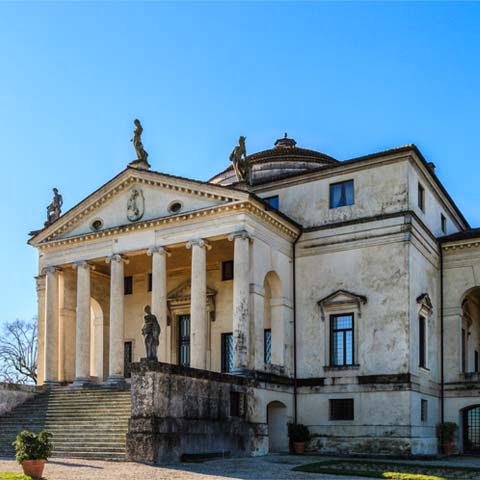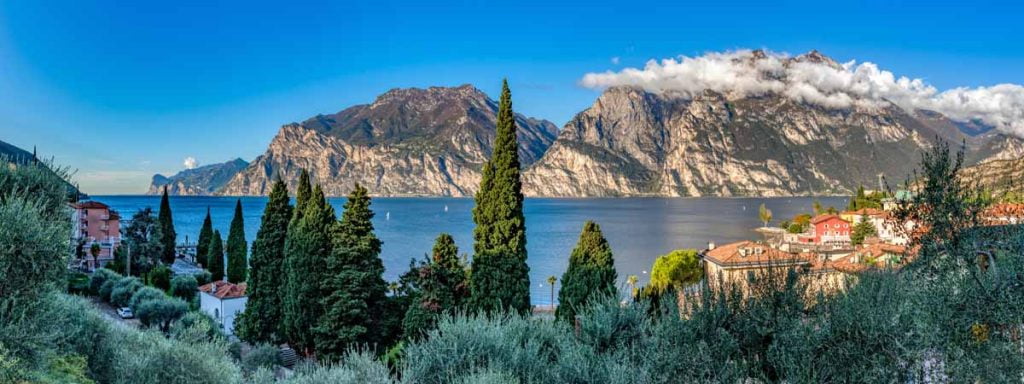A visit to the Riviera del Brenta promises a trip that feels almost as if one has gone back in time. The fifteenth to eighteenth century villas that line the canal offer a unique glimpse into the history and culture of Venice and the Veneto region. During the glory days of the Riviera del Brenta, powerful, noble families built this collection of palatial villas, commissioning some of the time’s best architects to design the structures and the most talented artists to adorn the walls with stunning frescoes and masterpiece-worthy works of art. Truly, nothing quite compares to the cultural and historical significance held inside the walls of the villas along the Riviera del Brenta.
ART
The Villa Pisani Nazionale holds one of the area’s best museums. The National Museum is home to a variety of spectacularly preserved works of art and unique and historic pieces of furniture from the eighteenth and nineteenth centuries. The villa’s most famous work of art is a ceiling fresco located in the main ballroom. Titled The Glory of the Pisani Family, this fresco is considered a masterpiece by artist Gianbattista Tiepolo. Throughout the year, the villa’s museum also hosts excellent art exhibitions.
For more historic frescoes, visit Villa Widmann-Foscari. Built in the eighteenth century, this structure is home to an upper salon that is almost entirely frescoed from floor to ceiling. The frescoes are works by artist Giuseppe Angeli who apprenticed with artist Giambattista Piazzetta. The pieces are light and bright in color and depict images of Greek mythology.
Fans of Italian art and fashion must see Villa Foscarini Rossi. This seventeenth century villa was once owned by the Foscari family who commissioned many talented decorators, architects, and artists to adorn the villa with beautiful art and decorative pieces. It was eventually purchased by the Rossi family who restored it with stunning frescoes and architectural features after the villa was damaged during World War II. The Rossi family owned a company that made shoes for some of the world’s most high-end brands. Today, the villa is home to a museum that is dedicated to the history of Venetian shoe-making. There are nearly 2,000 varieties of luxury shoes on display. The villa also contains a vast art collection
In addition to the art that can be admired along the Riviera del Brenta, the area itself has been a subject in several works of art over the years. Among the most notable examples are engravings by artists such as Vincenzo Coronelli, and landscape paintings by artists such as Canaletto, Tiepolo, Francesco Guardi, and Giovanni Battista Cimaroli.
ARCHITECTURE
One of the most stunning villas architecturally is Villa Pisani Nazionale. With mammoth size – it features over 100 rooms – and opulent Baroque details, it is no wonder that the villa was once used to welcome royalty and very wealthy and important figures of the time. In addition to over-the-top elegance in the villa’s architecture, the villa’s grounds are also stunning and unique. There is a spectacular, complex hedge maze – one of the most well-preserved in Europe – as well as an array of fruit trees, plants, flowers, and more.
Villa Widmann was built in the eighteenth century by architect Andrea Tirali and it features architectural details that capture the spirit of the area’s last days in Rococo (late Baroque) style. Expect to see opulent chandeliers, a grand ballroom, and intricate details throughout. In addition, there is a small church and a selection of eighteenth century garden statues throughout the park that encompasses the north end of the property.
A villa built in the mid-1500s, Villa Foscari was crafted by Italian architect Andrea Palladio, who was commissioned for the project by the Foscari brothers Nicolò and Luigi. A unique feature of the villa is that it is situated atop an 11-foot-high pedestal. Since the villa was used frequently for official receptions and events, it features two grand staircases in the main building that allowed for grand entrances by royalty and important societal and political figures. The villa was restored a few times throughout history, however electricity was never installed so it truly maintains its original feel and charm. It has been dubbed a UNESCO World Heritage Site.
For fans of Baroque-style architecture, the Villa Contarini is a stunning place to visit. This palace-sized villa sits on a massive area of land that contains private canals, a lake, and natural gardens. It was built originally as a castle and was purchased by the Carresi family in the early 1400s. The family turned the castle into a luxury estate, commissioning architect Andrea Palladio to completely renovate the structure and make it Baroque. After more renovations many years later, which added distinct, grand nineteenth century details to it, the villa would eventually become property of the region of Veneto. Today, it is open to the public and serves as a location for concerts and other public events.
Another distinctly Baroque style villa along the Riviera del Brenta is the Villa Foscarini Rossi. Built in the mid-seventeenth century, it was eventually owned by the powerful and influential Foscarini family who would proceed to commission famous architects, decorators, and artists to enhance the villa.
LITERATURE
The fifteenth to eighteenth centuries in the Veneto region are considered to be some of the most opulent and beautiful, as the city was wealthy and the citizens were happy to bask in the wonder of the Venetian glory days. Many novels and poems have been penned about the beauty of the Riviera del Brenta and the stories of the wealthy families who lived along it. Writers such as Goldoni, Casanova, Byron, Goethe, Montaigne, and D’Annunzio have all memorialized this time and place in their work.
MUSIC
Villa Contarini is home to a unique “Sala della musica” (Music room) that is renowned for its impressive acoustics. The largest room of the villa serves as an auditorium and hosts musical events throughout the year. The auditorium has a wooden false ceiling that mimics the soundbox of a guitar.
CINEMA
The 1976 Italian film Dimmi che fai tutto per me was partially filmed in Riviera del Brenta’s Villa Contarini, while the 2016 Italian film Una nobile causa was filmed in several locations along the Riviera del Brenta and in Padua.
SCIENCE
One of the area’s local claims to fame relates to the energy sector. The Riviera del Brenta town of Fiesso is home to one of the largest geothermal systems within the metropolitan city of Venice. Anunique aspect of the plant is that its geothermal probes are in cross-linked polyethylene, as opposed to the more prevalent high-density polyethylene.
Don't just see Italy, live it.
Your dream trip to Italy has never been closer
No more endlessly scrolling travel sites. Our travel experts will craft the perfect, one-of-a-kind trip just for you.

300+
DESTINATIONS
We offer more Italian destinations than any travel site. Do and see more with Trips 2 Italy.
1 (of a kind)
ITINERARIES
Because your dream trip to Italy should be designed for you, not for the masses.
100%
PEACE OF MIND
From flights and accommodations, to food and activities - we take care of every detail.









